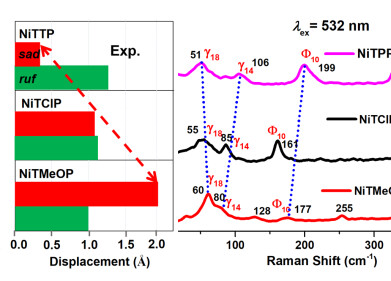Mass spectrometry & spectroscopy
Who Discovered NMR Spectroscopy?
Oct 15 2021
Since Nuclear Magnetic Resonance (NMR) molecular beams were first observed and measured in 1938, the analytical technique has become an invaluable tool across a wide range of fields. Today, state-of-the-art instruments are used to analyse the molecular structure of a sample, as well as determine variables like content and purity.
A multitude of chemists, scientists and researchers have contributed to the discovery and development of NMR Spectroscopy over the decades, some receiving more recognition than others. Below, we spotlight some of the biggest names in NMR Spectroscopy and their contributions to the field.
Isidor Isaac Rabi and the Stern-Gerlach experiment
American physicist Isidor Isaac Rabi was an early pioneer of Nuclear Magnetic Resonance and was awarded the Nobel Prize in Physics in 1944 for his discoveries. In 1938 he built on the well-known Stern-Gerlach experiment of 1921, which saw scientists Otto Stern and Walter Gerlach observe the deflections of a beam of silver atoms as it passed through an inhomogeneous magnetic field. By proving that the spatial orientation of angular momentum is quantised, Stern and Gerlach proved the atomic-scale system has quantum properties.
Felix Bloch and Edward Mills Purcell
In 1946, American physicists Felix Bloch and Edward Mills Purcell built on the NMR foundations laid by Rabi, Stern and Gerlach. They expanded the analytical technique and applied it to both liquids and solids, winning them the Nobel Prize in Physics in 1952.
Richard Robert Ernst
Richard Robert Ernst was the next big name to reimagine the capabilities of NMR Spectroscopy. In 1991 the Swiss scientist was awarded the 1991 Nobel Prize in Chemistry "for his contributions to the development of the methodology of high resolution nuclear magnetic resonance (NMR) spectroscopy." The breakthroughs were made during Ernst’s time working at Silicon Valley-based tech company Varian Associates and public research university, ETH Zurich.
“Protons and neutrons in the atomic nucleus behave like small spinning magnets. Accordingly, atoms and molecules assume a certain orientation in a magnetic field. This can be dislodged, however, by radio waves of certain frequencies that are characteristic for different atoms,” reads the Nobel Prize website. “Known as resonance frequencies, these are also affected by the atoms' chemical surroundings. As a result, the phenomenon can be utilized to determine the composition and structure of various molecules. To accomplish this, Richard Ernst developed highly sensitive and high resolution methods in the 1960s and 1970s.”
New advances NMR Spectroscopy
New advances in techniques and technologies continue to push the boundaries of NMR Spectroscopy. British-based company Oxford Instruments is a leader in high-tech products and services, with the new X-Pulse Broadband Benchtop NMR Spectrometer the latest addition to the arsenal. Find out more about the cutting-edge technology in ‘X-Nuclei NMR Spectroscopy’.
Digital Edition
ILM 50.2 March 2025
March 2025
Chromatography Articles - Effects of small deviations in flow rate on GPC/SEC results Mass Spectrometry & Spectroscopy Articles - Waiting for the present to catch up to the future: A bette...
View all digital editions
Events
Mar 31 2025 Beijing, China
Microbiology Society Annual Conference 2025
Mar 31 2025 Liverpool, UK
Apr 01 2025 New York, USA
Apr 02 2025 Saigon, Vietnam
Apr 09 2025 Tokyo, Japan




















